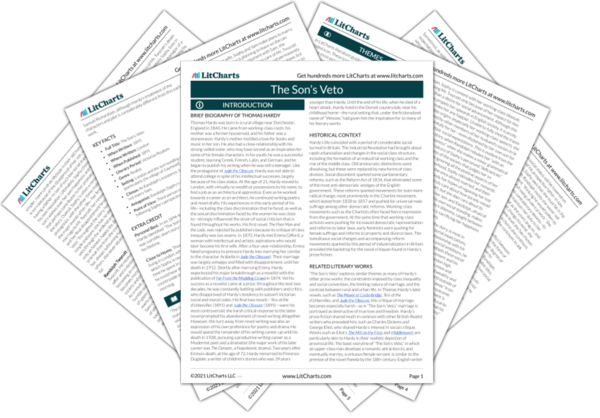Sophy’s broken foot symbolizes the paralysis that takes hold of her life with her marriage to Mr. Twycott. She is injured while taking care of an ailing Mr. Twycott, slipping down the stairs while carrying a tray. This event changes her life in two ways: she is no longer able to continue her old occupation as a maid, as it requires strenuous physical movement; and it prompts Mr. Twycott to recognize his strong affection for Sophy, leading to his marriage proposal. As a result, Sophy’s injury unexpectedly leads to an improvement in her social status. But Sophy’s social mobility is soon accompanied by a sense of immobility—the inner counterpart to the immobility caused by her injured foot—that results from her isolation within an unfamiliar and hostile social circle, and her lack of freedom and control over her own family’s affairs. She feels the double burden of her injured foot and the social constraints upon her especially strongly after Mr. Twycott’s death, when she has no choice but to spend her days in dreary monotony, watching the country roads from her villa and wishing she could return to the village of her youth. Sophy’s injury makes the prospect of her return to that idyllic, hard-working country life seem even more impossible. But her relationship with Sam does allow Sophy to experience, if only briefly, some measure of freedom and mobility again, as they travel through London on Sam’s wagon. This suggests that the limitations imposed by Sophy’s injury are not inevitable, but rather the product of both societal structures and Sophy’s own choices. Ultimately, in swearing to her son Randolph that she will not marry Sam, she acquiesces to these limitations, rather than seizing the possibility of freedom.








